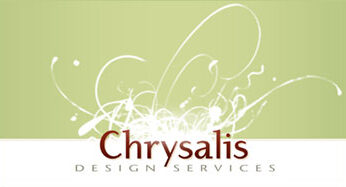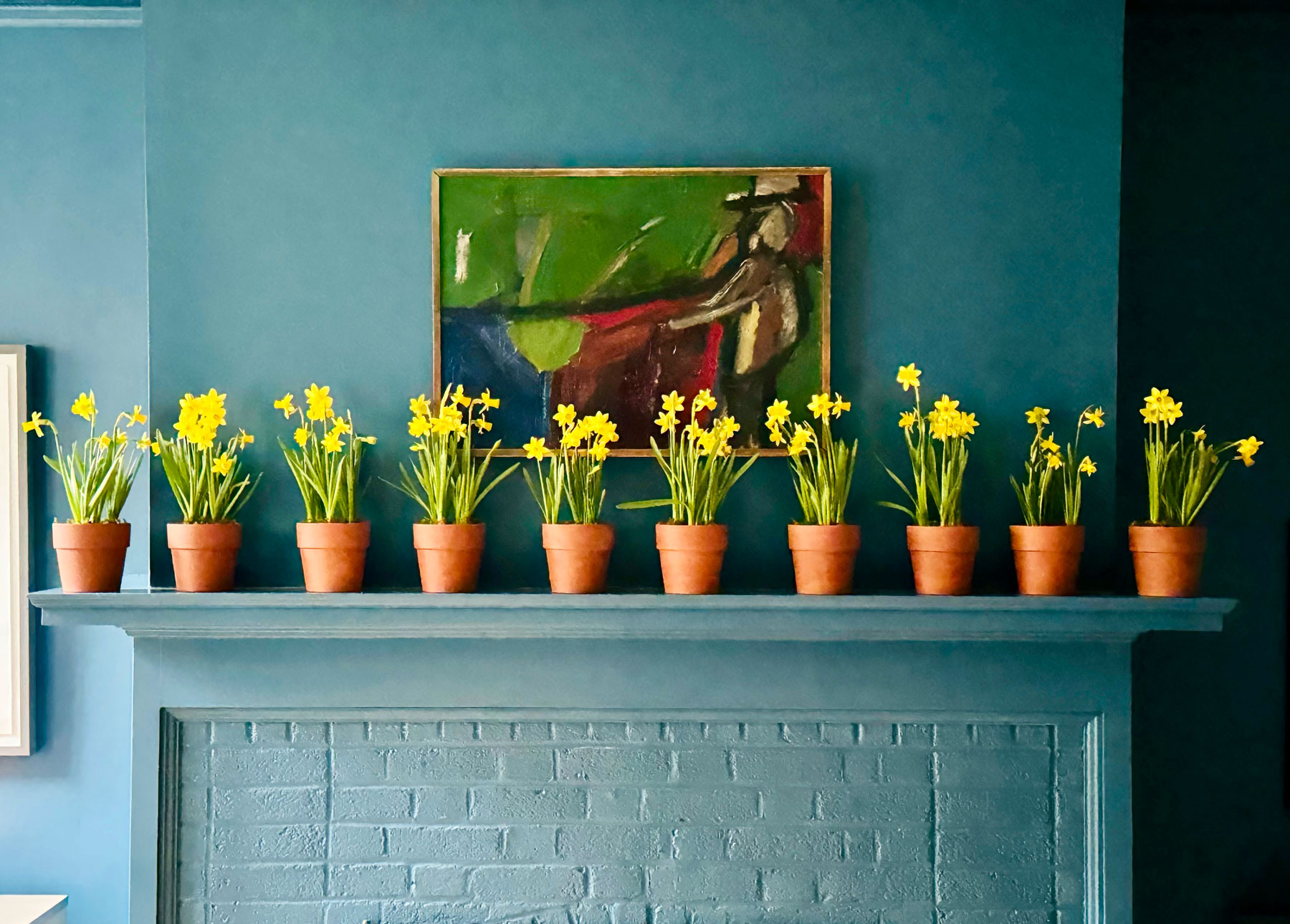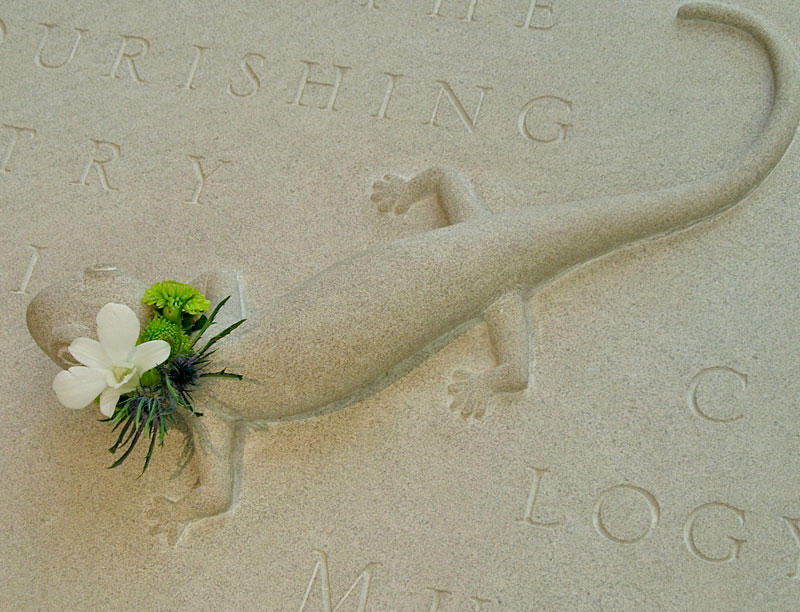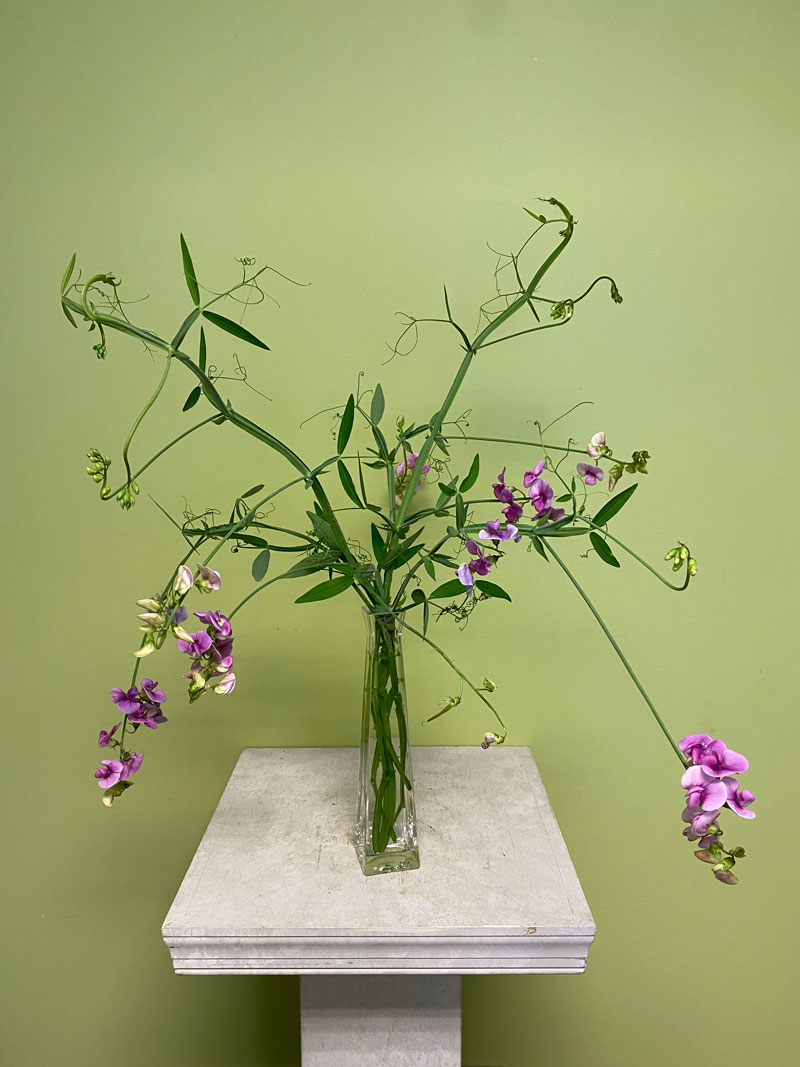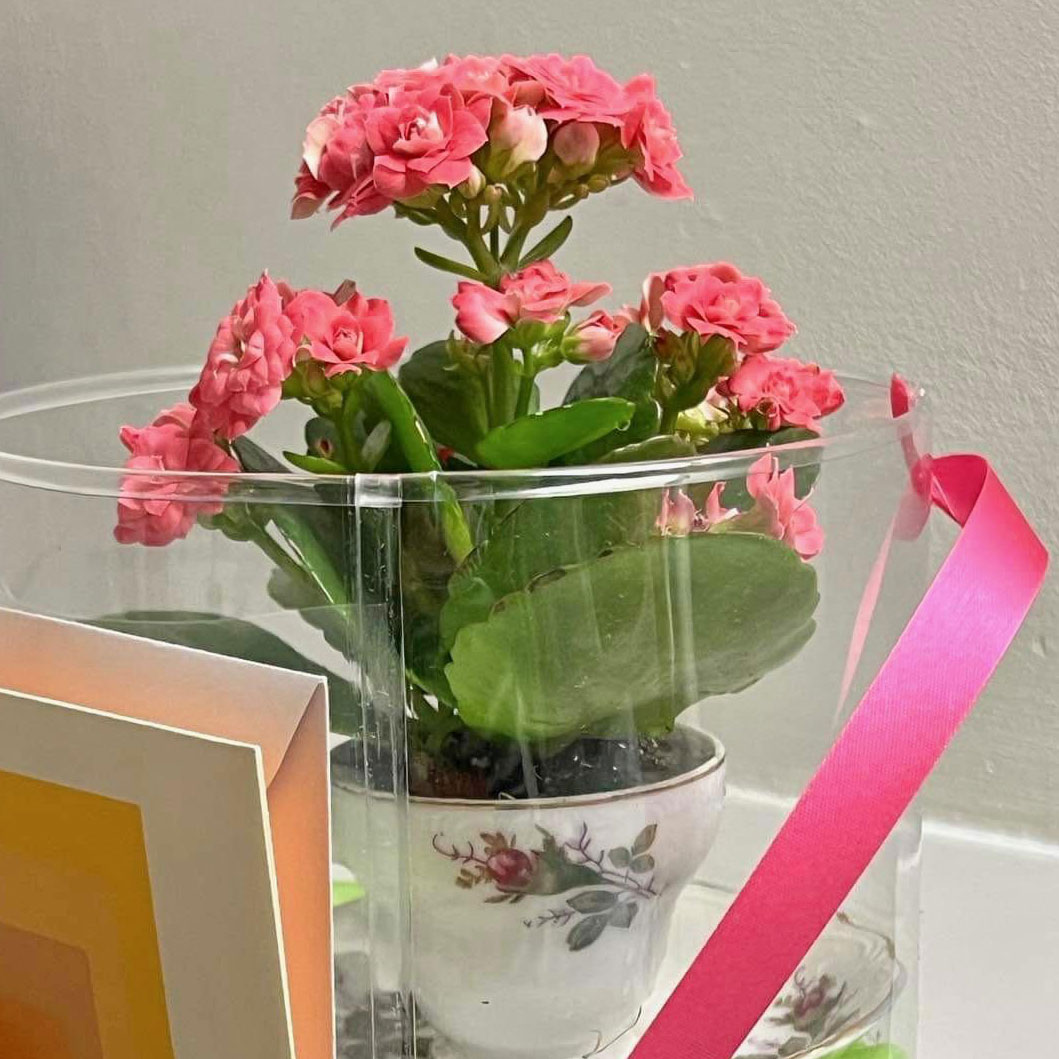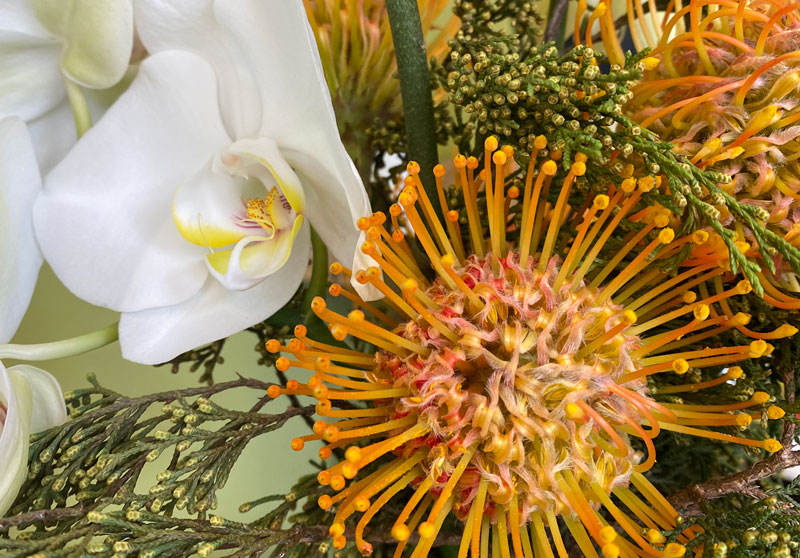Project Assignment:
Design florals for a dinner reception at the Yale President’s House to honor the black female artist, Howardena Pindell, one of many women alums honored in 2018 and 2019 as the University celebrated 50 Years of Women at Yale.
These assignments are some of the most interesting of my career. They require in-depth research with a very particular visual lens to suss out design inspiration from published accounts of their fascinating careers and lives. With inspiration comes the challenge of interpretation with my medium to design floral creations that are visually compelling homages to these very special people.
Pindell, unknown to me before this assignment, was such an interesting artist to research. I found her career and artistic output very inspiring and a number of her works resonated with the materials of my profession. This piece, in particular, was inspiring to me as a visual theme to run with:
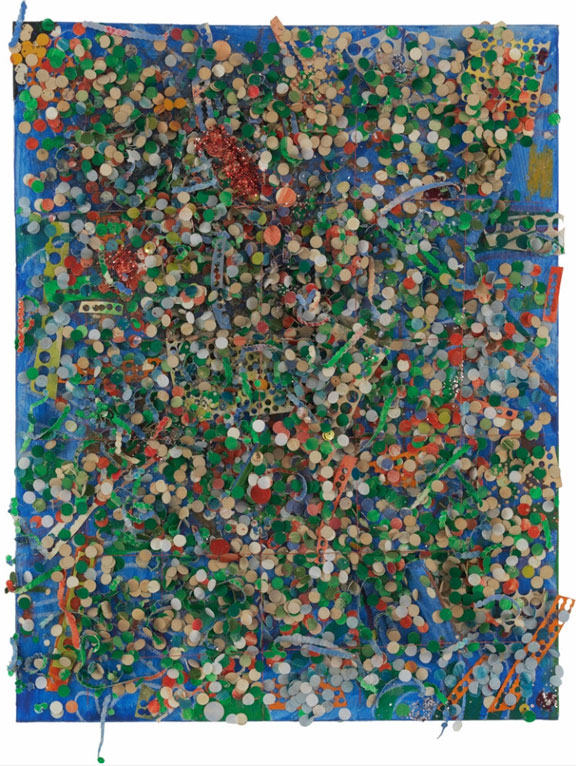
It is a multi-media work using paper punch dots and the scrap paper fragments of the punched papers collaged with other materials and mounted onto a painted surface.
To translate this image into my medium, I had to first consider how to create a surface structure to accommodate foliage and cut flowers, and, at the same time, hold in place the materials I would use to interpret her work with my materials. A stiff mesh seemed the most promising material to build upon, so a trip to building supplies distributor seemed an obvious place to start. There I found two steel mesh gauges that, in combination would accommodate flowers inserted through the mesh into water tubes which I would use to elevate the mesh surface from the dining table surface to allow room for cut foliage and flower stems to be suspended. The smaller gauge mesh would be the base surface onto which all other materials would be layered, the fine mesh gauge small enough to hold the paper punch dots up on my “canvas”. To begin the layering that Howardena achieves in her work, I used the larger mesh cut in random shapes of various sizes. I liked the notion that canvas and steel mesh are woven materials.
With tin snips I cut runner scale pieces at 3.5’ x 16” an attached the large mesh pieces with needle nose pliers.

Next I prepared the “canvas” by spraying bold paint colors over the entire mesh surface.
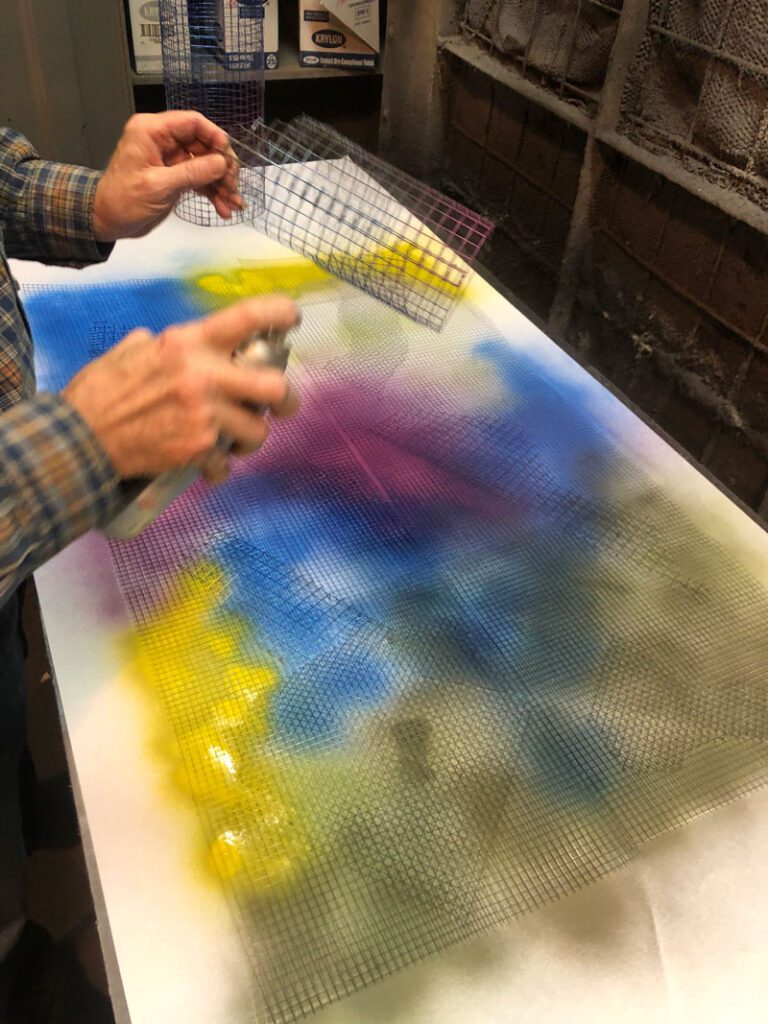
For the collage paper I purchased sheets of gorgeous handmade, block printed papers. Using a commercial manual paper punch tool I punched thousands of dots. With the hole ridden scraps, I cut random strips and shapes that were similar to the mesh fragments. With lots of Spray Mount, I affixed the fragments and the paper dots to the mesh canvas and built up layers over the entire surface of the runners.
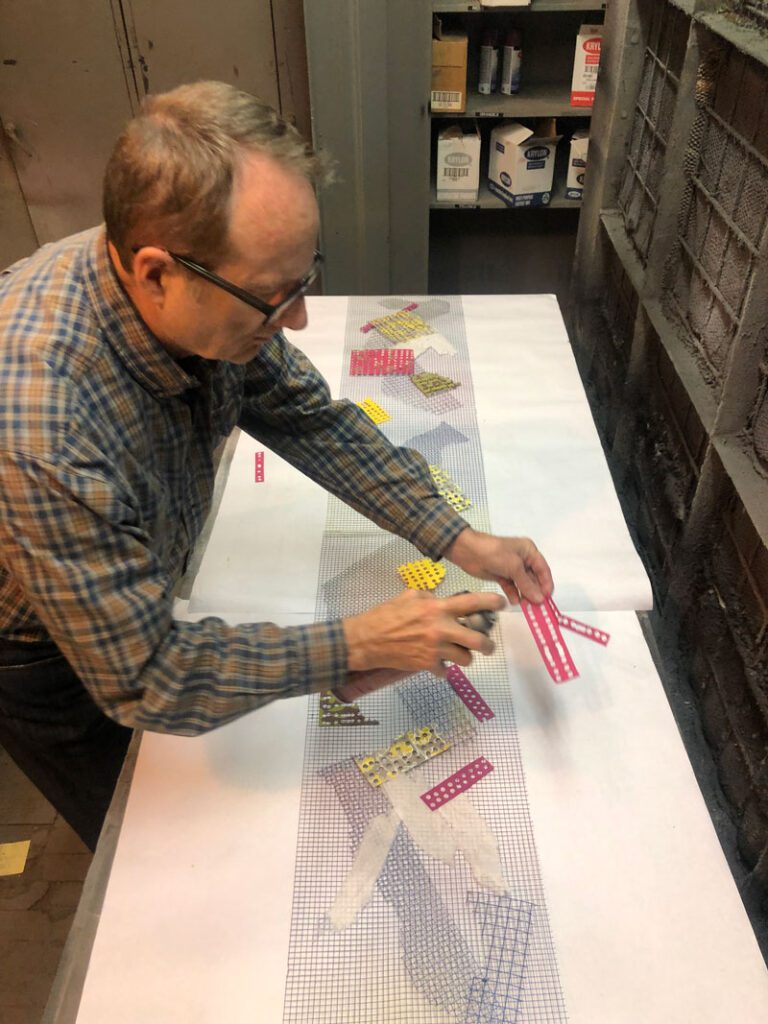
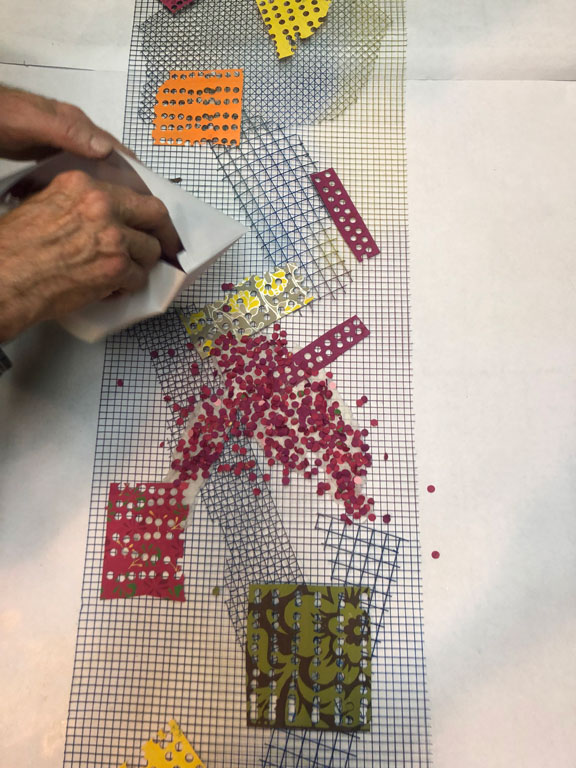
Torn tissue paper and generous pinches of dots steadily built up the surface.
For the vase arrangements required for this dinner party, I fabricated mesh sleeves that I wrapped around clear glass cylinders.
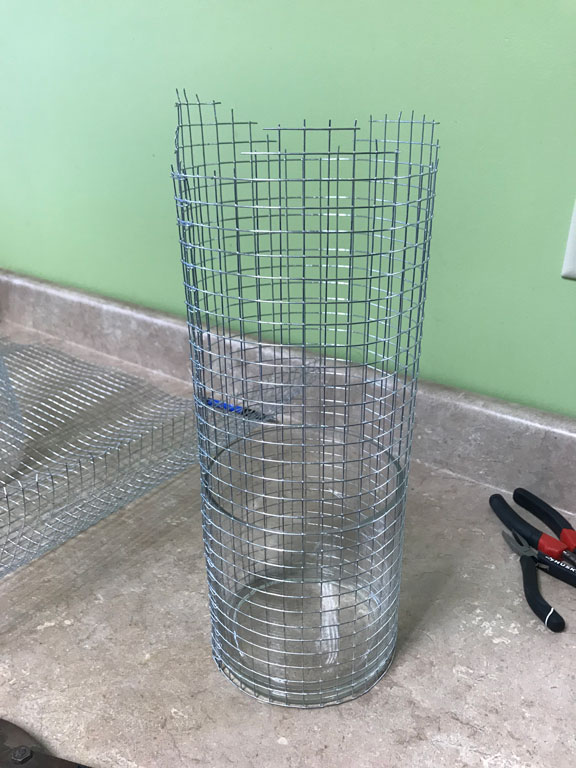
With the mesh fabrications complete, I went to the wholesale markets to search out floral materials the I could thread through the mesh surfaces to creat the table runners and the vase arrangements. I was focused on round shapes and bold colors. I selected Silver Dollar Eucalyptus, Button, Daisy and Pompom Chrysanthemums for the runners and added hydrangeas to fill the interior of the mesh sleeve vases. These flowers were thoroughly hydrated and then sealed with a spray anti-desiccant to preserve the bulk of the runner flowers which would not be in water.
The vase arrangements were designed in the studio. Because of the scale and flexibility of the runners, it was best to install the floral elements on site.
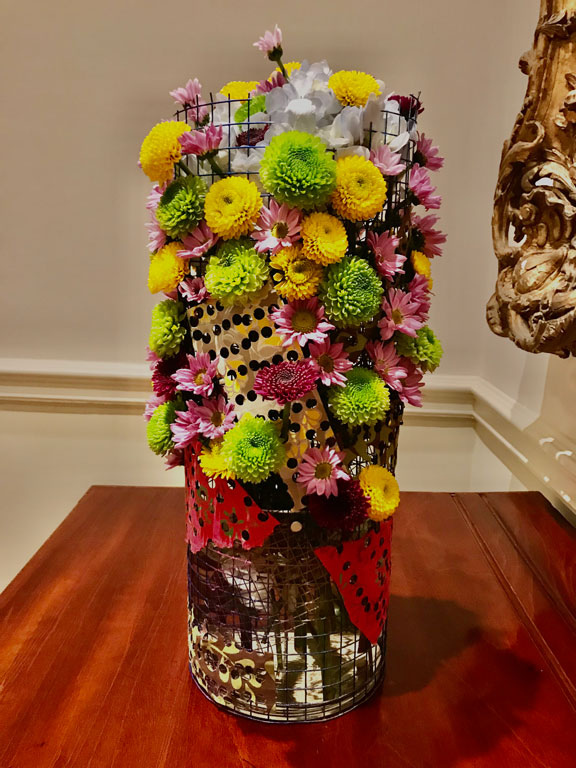
My assistant and I began working in the ground floor kitchen where we filled 1 1/2” water tubes, recycled from shipments of dendrobium orchid stems. These tubes we placed underneath the mesh along the perimeter, spaced every 6” with additional scattered through the field of the mesh runners. This stabilized the elevation of the mesh required to to display these pieces on the work surface enabling us to populate the runners with the eucalyptus, button and daisy chrysanthemums. Once this phase was completed we moved the runners to the 24’ dining room table on the first floor.

As we were working on the table an unexpected phenomenon enriched the experience of viewing these runners: The downlighting on the table cast wonderful leaf shadows enhancing the surface layering with shadowed depth thanks to the necessary elevation of the runners! Once we finished our pavée, the serving staff set the table.

When I returned to the President’s House to collect the containers and runners, the event staff greeted me with apprehension. With worried faces they recounted the previous evening. As they came to describe the dinner, they recounted that the hosts noticed tears streaming down Howardena’s face. When asked if she was alright, she replied, “I am so moved by this table. No one has ever honored me in this way!” After dinner, as she was standing in the foyer preparing to depart, she turned to her hosts and asked if she could have the entry hall arrangement “as a memento of this wonderful night?” The President said “Absolutely! We are delighted for you to have it!” It was this gifting that made the event staff so anxious. “There was no way to ask you…, we hope you don’t mind!” “On the contrary”, I replied, “I am flattered and honored that she would want a piece of my work as a remembrance!”
